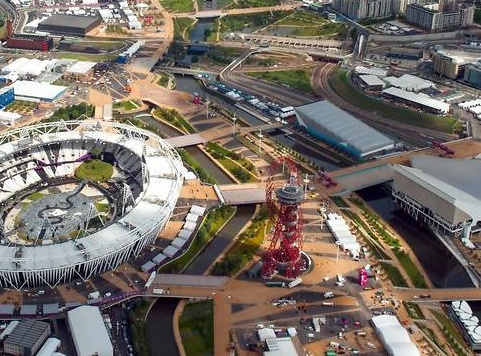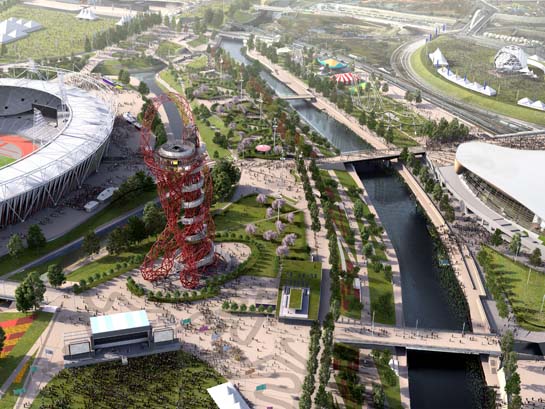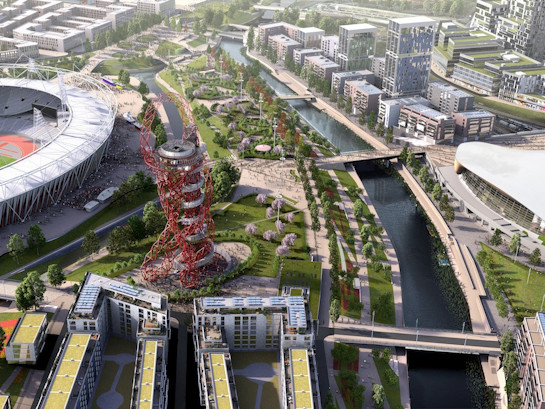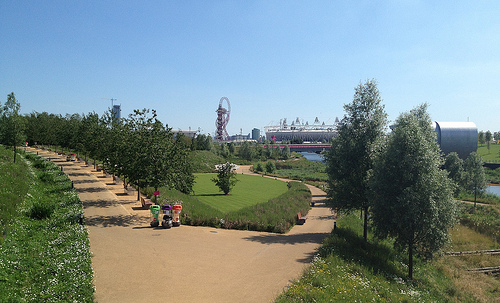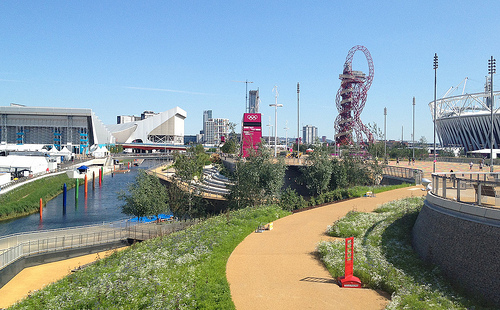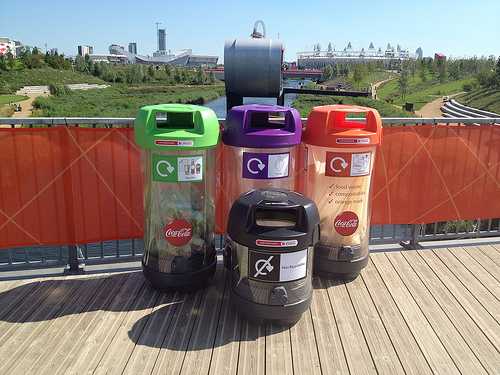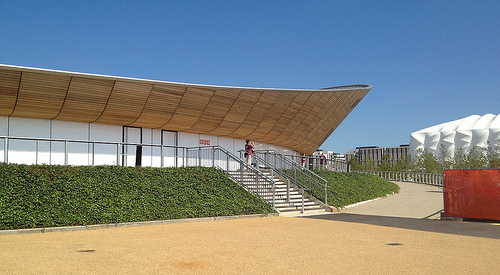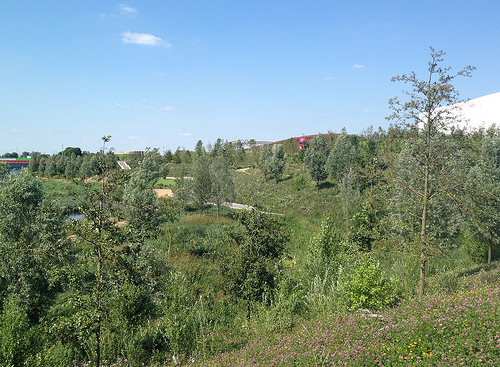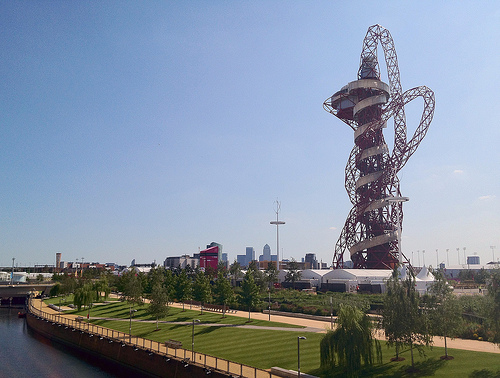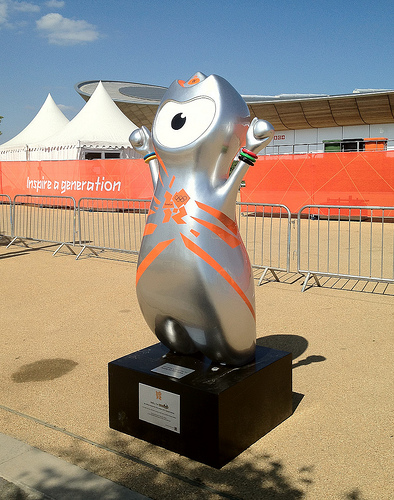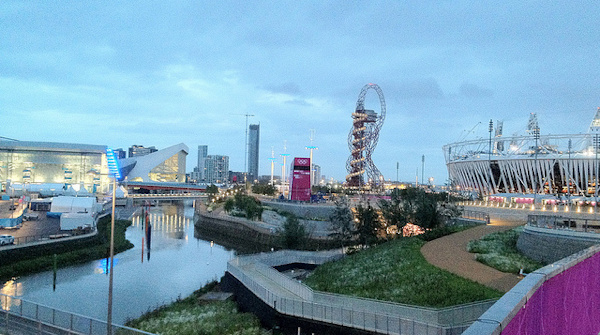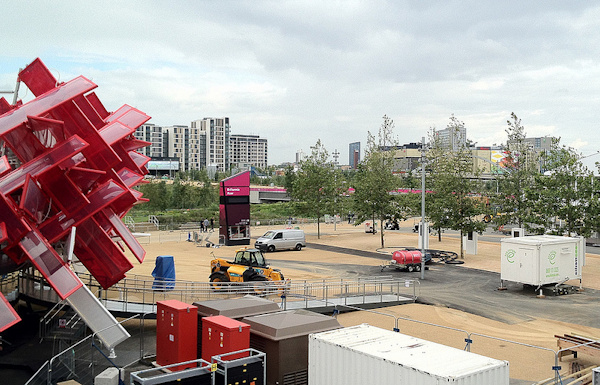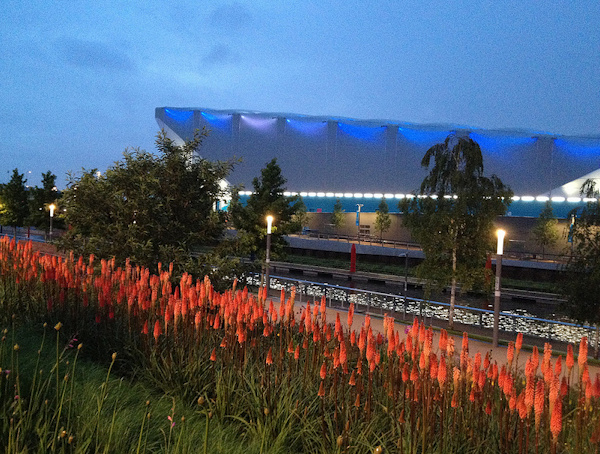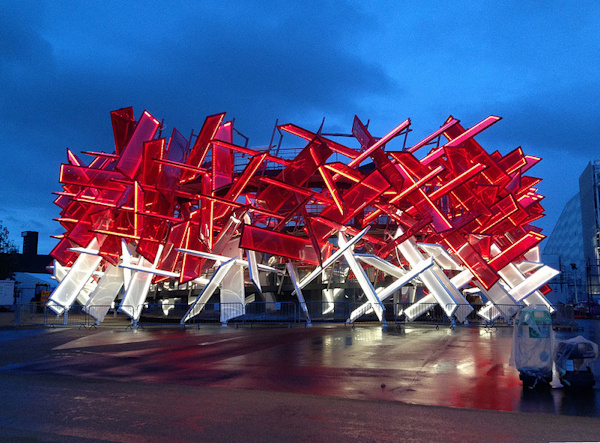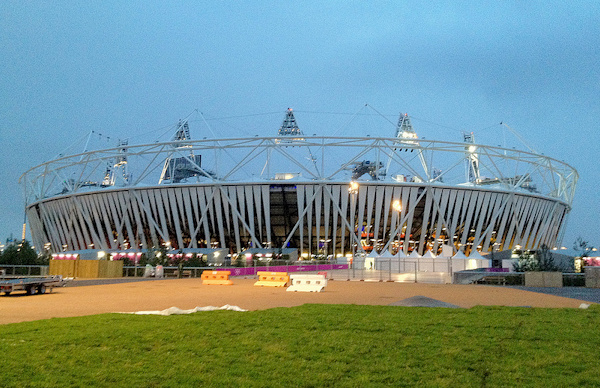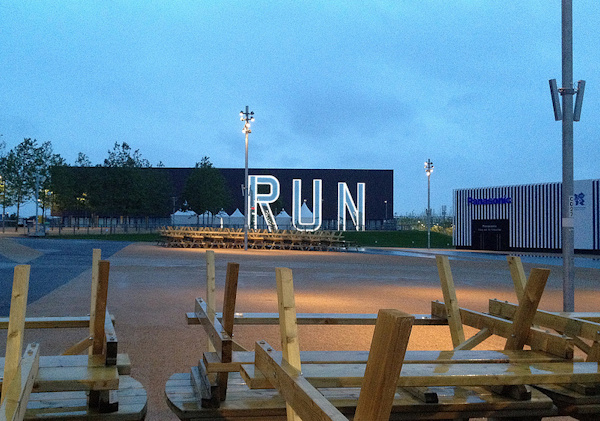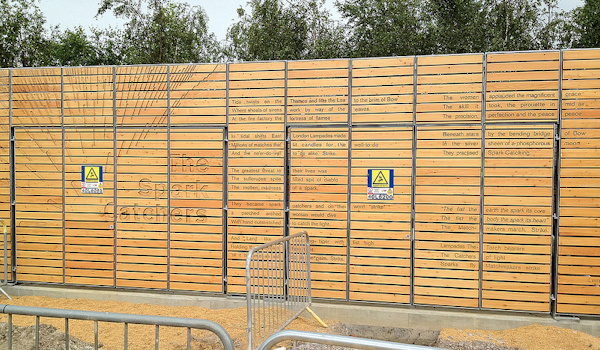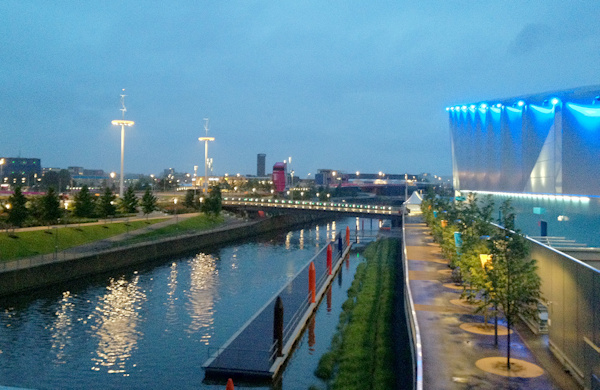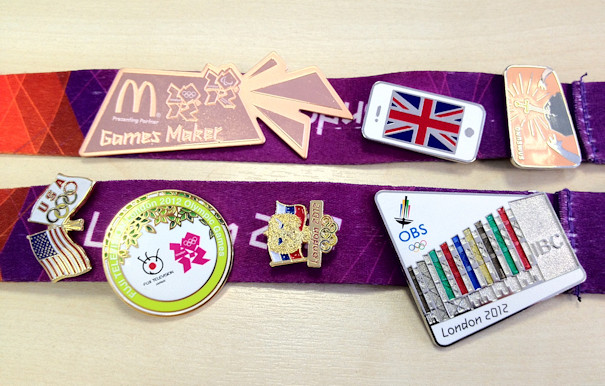
The medals aren’t the only shiny things at London 2012. Pin trading is a long Olympic tradition, and while, for the first week, I was mildly curious about the lanyards of some of my fellow volunteers being adored with various badges, a couple of donations meant that I was hooked by the middle weekend of the Olympics.
Above is the current set on my lanyard.
Everyone seems to have different rules for trading pins – I’ve made up my own, which means my collection tends to have smaller and more specialised pins than most others:
- A – 1 point for every fixing on the back of the pin
- B – 1 point if the pin has recessed/embossed sections
- C – 1 point if the pin has no sponsor words or logos on the front
- D – 1 point if it mentions “London 2012”
- E – 1 point if it has the Olympic rings (standalone)
- F – 1 point if it has the London 2012 logo
- G – 1 point if has a country’s flag on it
- H – 1 point if it is individually numbered
So far, my pin trading narrative has been:
| Pin |
Trade Type |
Who |
Points |
| Games Maker colour |
Given |
LOCOG |
4 (AABF) |
| Apple iPad (black) |
Given |
Friend |
3 (ACG) |
| Apple iPhone (white) |
Collected |
Apple Store |
3 (ACG) |
| Russian flag |
Given |
Journalist |
5 (ACDEG) |
| NBC |
Swapped iPad (3pts) |
Army soldier |
3 (ACD) |
| Sverige |
Swapped Games Maker (4pts) |
Army soldier |
2 (AC) |
| Apple iPad (white) |
Collected |
Apple Store |
3 (ACG) |
| Samsung (Sherlock) |
Collected |
Samsung booth |
1 (A) |
| USA flag |
Swapped Sverige (2pts) |
Volunteer |
4 (ACEG) |
| Saudi Arabia NOC |
Swapped NBC (3pts) |
G4S guard |
3 (ACE) |
| Samsung (Shakespeare) |
Collected |
Samsung booth |
1 (A) |
| Games Maker bronze |
Given |
LOCOG |
4 (AABF) |
| OBS IBC building |
Swapped Saudi Arabia NOC (3pts) |
Collector |
6 (AABCDE) |
| Samsung (Umbrella) |
Given |
Friend |
1 (A) |
| Samsung (Umbrella) |
Given |
Friend |
1 (A) |
| Samsung (King Arthur) |
Swapped Samsung (Umbrella) (1pt) |
Bus despatcher |
1 (A) |
| Fuji Television |
Swapped 3x Samsung + iPad (6pts) |
Bus despatcher |
5 (ACDFH) |
Some people are weighed down with around 20 pins dangling around their necks, while some hide them away on their bags (which is the only place where we are officially allowed to have them) and others don’t have them at all…
Where to get pins
The main area for “professional” pin traders is not the offical venue – the Coca-Cola Pin Trading building near the Orbit – but actually it’s at what is perhaps the most exciting area of the whole games. The area is a small 200m long, 30m wide concrete plaza. On the south side is Stratford International station, with the Javelin high-speed trains to King’s Cross. On the north side is the slightly useless Stratford International DLR station. To the east is an entrance for athletes to the Olympic Village, and to the west is the media entrance to the Olympic Park and the shuttle buses that run to various park venues and the Main Press Centre.
The area is accessible without a ticket to events in the Olympic Park – and so is the best place for non ticket-holders to see athletes, particularly as the press often use this “neutral” area to carry out interviews with their athletes. On the south side of the plaza, adjacent to Stratford International, is where 10-15 pin traders have set up their collections.
To start a collection off, the Samsung and Apple stores, at Stratford City, are giving away pins at a steady rate. Some collectors will swap these for a big collection of old (pre-2012) Olympic pins, and you can go from there.
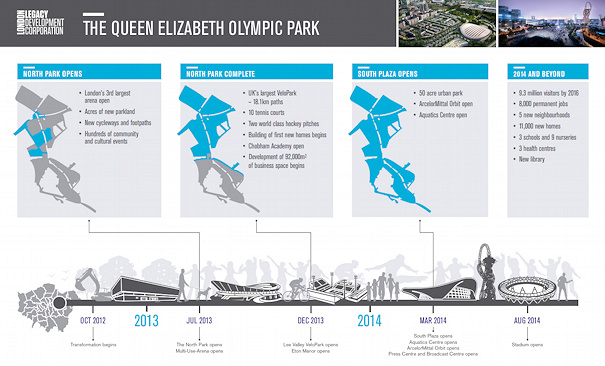
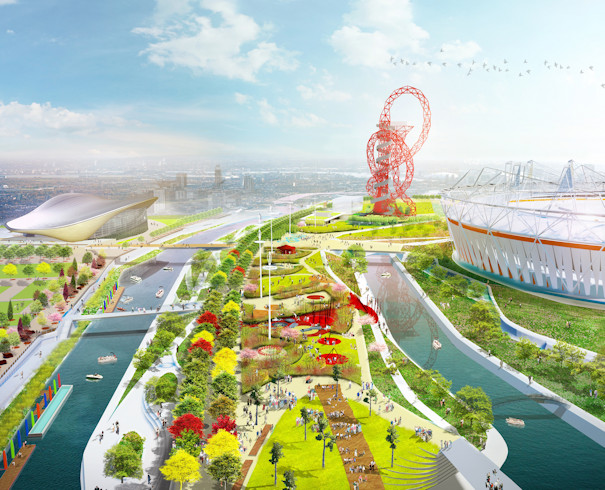
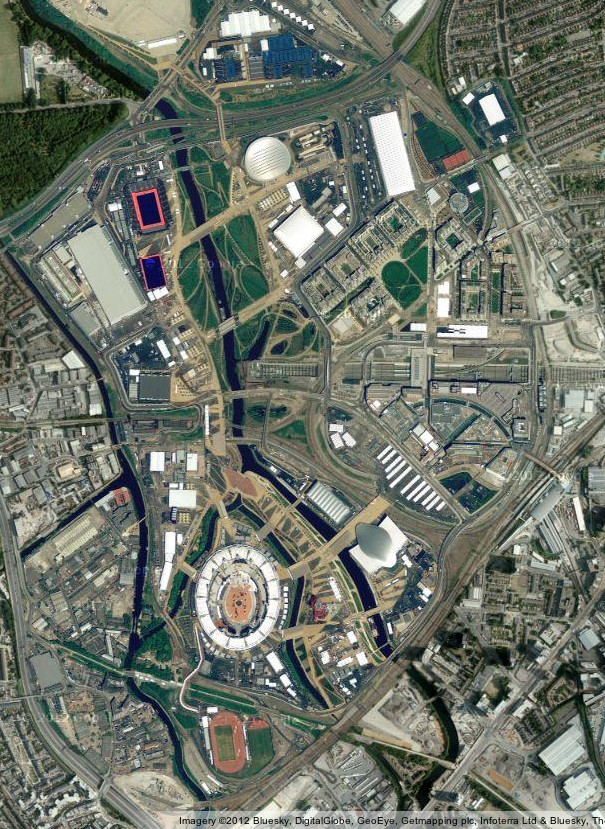
 There’s a new, temporary panel on the
There’s a new, temporary panel on the 